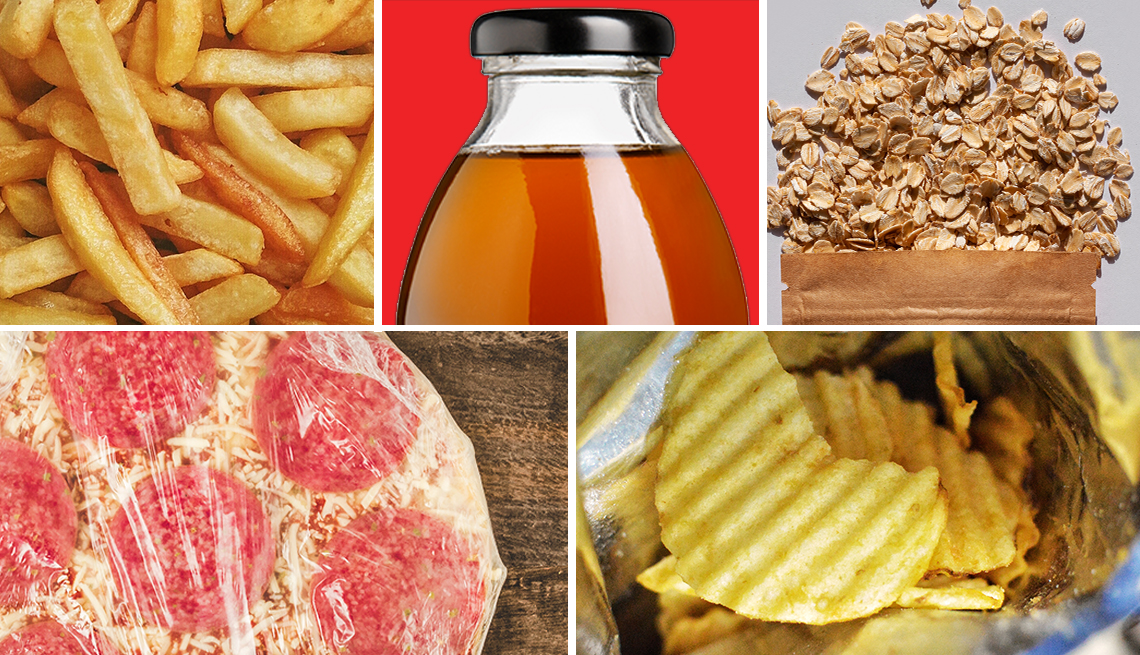
There are many health foods that are delicious and filling. Including them in your diet will provide you with colorful, nutrient-rich meals that taste great. You can find them in fruits, vegetables, seeds, nuts, legumes and other foods. They are also delicious and require little preparation. Apples are high in fiber, vitamin A, antioxidants, vitamins C, and other nutrients. You can find them in most supermarkets, and they are easy to add to smoothies.
Prunes are a great source of nutrition and can help you maintain your digestive health. Their high levels of fibre and antioxidants make them a great choice for your health. A quarter cup of prunes is 104 calories with 12% fibre. These can be added to cereals, smoothies, or baked goods. You can also add them to sauces or hummus. This makes them a good snack to include in your daily diet. They are delicious and easy to obtain.
Additionally, there are many starchy vegetables that you can choose from. These include sweet potato, beets and squash. These are great sources of fiber and energy. They are also rich in B and zinc. They're great for your body and are also rich in iron and calcium. When you make them at home, compare their nutritional values with other brands.

You can also have grilled fish as an alternative to salad. Some of the best types of fish to eat are salmon, trout, mackerel, herring, sardines, tuna, and mackerel. They are rich in omega-3 fatty acid, which is essential for signaling, cell membrane fluidity and structural maintenance. They are also known to reduce the risk from heart disease, diabetes, and cancer.
Besides fruits and vegetables, you can also eat legumes, which are high in protein and dietary fibre. These foods will help you eat more and keep you from snacking during meals. They can be used in place of meat and offer the same level of protein, but with less fat. Calcium-enriched alternatives are available if you don't want to eat dairy or meat. They contain 100 mgs of calcium per 100ml.
It is important to choose healthy foods. Including fruits and vegetables is crucial for your overall health. They are high in vitamins and minerals as well as fiber. It's important that you choose the right fruits and veggies to eat every day. And remember to eat them as often as you can, as they're good for your body. You should eat as many as possible.
Another healthy food is yogurt. Yogurt has a high protein content and makes a great breakfast food. It is also rich in vitamins and minerals. It's also rich in soluble fibre, which is found naturally in whole grains, fruits and vegetables. Mixing different foods can make them more interesting. Some people prefer tea, while some prefer coffee. Coffee may not be as popular than their counterparts but it has many health benefits including increasing energy and decreasing the risk for type 2 diabetes.

People should also eat more vegetables and fruits. Beans are low in fat and high in protein. They are also high in potassium, magnesium, fiber and protein. They are also rich in plant protein. They're also quite affordable. They can be used as side dishes and in salads. However, many people don't get enough beans.
Beans and seeds are among the most important foods to eat everyday. They contain phytonutrients, fiber, and B vitamins. They're also cheap. They can also help you lose weight and keep it off. And, you'll be eating a wide variety of healthy foods to eat every day. You can eat small amounts of these foods if you have the means. They're filling and tasty, and they're simple to prepare.
FAQ
How to measure bodyfat?
A Body Fat Analyzer (BFA) is the best method to measure bodyfat. These devices measure the body fat percentage in people who wish to lose weight.
Do I have to count calories?
You may be wondering "what is the best diet for you?" or "is counting calories necessary?" The answer to this question depends on many factors, including your current health, your personal goals and preferences, as well as your overall lifestyle.
The Best Diet For Me: Which One Is Right?
My personal health, goals and preferences as well as my lifestyle determine which diet is best for me. There are many diets out there, some good and some bad. Some diets work better than others. So what should I do? How do I make the right decision?
These are the questions that this article attempts to answer. It starts with a brief introduction of the different types of diets available today. After that, you will learn about the pros and disadvantages of each type. Finally, we'll discuss which one is best.
Let's look at some of the main types of diets to get started.
Diet Types
There are three main types: low-fat, high-protein, or ketogenic. Let's look at each one briefly.
Low Fat Diets
A low-fat diet is one that limits the intake of fats. This is done through reducing the intake of saturated fats (butter, cream cheese, etc.) You can replace them with unsaturated oils (olive oil and avocados) Low fat diets are often recommended to those who wish to lose weight quickly. This diet can cause constipation, heartburn, and stomach problems. In addition, it may lead to vitamin deficiencies if a person doesn't get enough vitamins from their food.
High Protein Diets
High protein diets restrict carbohydrates in favor of proteins. These diets typically have more protein than other diets. These diets are intended to increase muscle mass and reduce calories. The downside is that they may not provide adequate nutrition for someone who needs to eat regularly. Also, they tend to be very restrictive, so they aren't suitable for everyone.
Ketogenic Diets
Ketogenic diets are also known as keto diets. They are high in fat, moderately high in protein and low in carbohydrates. These foods are popular among athletes and bodybuilders as they allow them to train harder, longer and without becoming tired. To avoid side effects such as fatigue, nausea, headaches, or other unpleasant side effects, you must strictly adhere to their instructions.
Is it possible to have a weak immune system due to being cold?
Cold can make you less immune to infection because your body makes fewer white blood cells, which are essential for fighting infections. Cold can also make you feel better as your body releases endorphins to your brain, which reduce pain.
How can I tell what is good for me?
Your body is your best friend. When it comes to your body's needs for exercise, food, or rest, it is the best. You need to be aware of your body and not overdo it. Be aware of your body and do what you can to maintain good health.
What's the difference between a calorie and kilocalorie?
Calories can be used to measure how much energy is in food. The unit of measurement is called a calorie. One calorie is the amount of energy required to heat one gram water one degree Celsius.
Kilocalories are another term for calories. Kilocalories equal one thousandth of a calorie. For example, 1000 calories equals one kilocalorie.
What is the difference between a virus and a bacterium?
A virus is an organism microscopic that can't reproduce outside its host cells. A bacterium (or single-celled organism) reproduces by splitting itself into two. Viruses have a very small size (about 20 nanometers), while bacteria is larger (up to one micron).
Viruses are usually spread through contact with infected bodily fluids, including saliva, urine, semen, vaginal secretions, pus, and feces. Bacteria is usually spread directly from surfaces or objects contaminated with bacteria.
Viruses can enter our bodies through cuts, scrapes, bites, or other breaks in the skin. They may also enter through the nose, mouth, eyes, ears, vagina, rectum , or anus.
Bacteria can enter our bodies through wounds, cuts, scrapes, burns, insect stings, or other breaks in our skin. They can also enter our bodies from food, water, soil, dust, and animals.
Viruses and bacteria both cause illness. But viruses can't multiply within their hosts. They can only infect living cells and cause illness.
Bacteria can grow in their hosts and cause disease. They can spread to other parts of our bodies. Antibiotics are needed to eliminate them.
Statistics
- This article received 11 testimonials and 86% of readers who voted found it helpful, earning it our reader-approved status. (wikihow.com)
- nutrients.[17]X Research sourceWhole grains to try include: 100% whole wheat pasta and bread, brown rice, whole grain oats, farro, millet, quinoa, and barley. (wikihow.com)
- In both adults and children, the intake of free sugars should be reduced to less than 10% of total energy intake. (who.int)
- WHO recommends reducing saturated fats to less than 10% of total energy intake; reducing trans-fats to less than 1% of total energy intake; and replacing both saturated fats and trans-fats to unsaturated fats. (who.int)
External Links
How To
What does the "vitamins” word mean?
Vitamins are organic compounds naturally found in food. Vitamins help us absorb nutrients from foods we eat. The body cannot make vitamins; therefore, they must be obtained from food.
There are two types of vitamins: water soluble and fat soluble. Water-soluble vitamins dissolve easily when they are dissolved in water. These include vitamin C (thiamine), Vitamin B1 (riboflavin), Vitamin B2 (riboflavin), Vitamin B3 (niacin), Vitamin B6 (pyridoxine), Vitamin C, B1 (thiamine), Vitamin B2 (riboflavin), Vitamin B3 (niacin), and Vitamin B6 (pyridoxine). The liver and fatty tissues are home to fat-soluble vitamins. You can find vitamin D, E K, A, beta carotene, and other fat-soluble vitamins.
Vitamins can be classified by their biological activity. There are eight major types of vitamins:
-
A - vital for healthy growth.
-
C – essential for proper nerve function.
-
D - Vital for healthy bones and teeth
-
E is required for good vision and reproduction.
-
K - Essential for healthy muscles and nerves.
-
P – vital for building strong bones.
-
Q – aids digestion of iron and iron absorption
-
R - Required for red blood cell production
The recommended daily allowance (RDA) of vitamins varies depending on age, gender, and physical condition. The U.S. Food and Drug Administration has established the RDA values.
For adults over 19, the RDA for vitaminA is 400 micrograms per daily. For fetal development, pregnant women need 600 mg per day. Children ages 1-8 require 900 micrograms per day. Babies under one-year old require 700 mg per day. Between 9 and 12 years of age, however, this drops to 500 mg per day.
Children ages 1-18years who are obese need 800 micrograms per day while those who are overweight need 1000 micrograms per day and children who are underweight need 1200 micrograms per day to meet their nutritional needs.
Children between 4 and 8 years old with anemia will need 2200 micrograms daily of vitamin C.
Adults over 50 years of age need 2000 micrograms per day for general health. Due to their increased nutrient needs, pregnant and breastfeeding women need 3000 micrograms daily.
Adults over 70 need 1500 micrograms daily, as they lose 10% of their muscle every ten years.
Women who are pregnant or nursing need more than the RDA. Pregnant woman need 4000 micrograms daily in pregnancy, and 2500 per day after childbirth. Breastfeeding mothers need 5000 micrograms per day when breast milk is being produced.